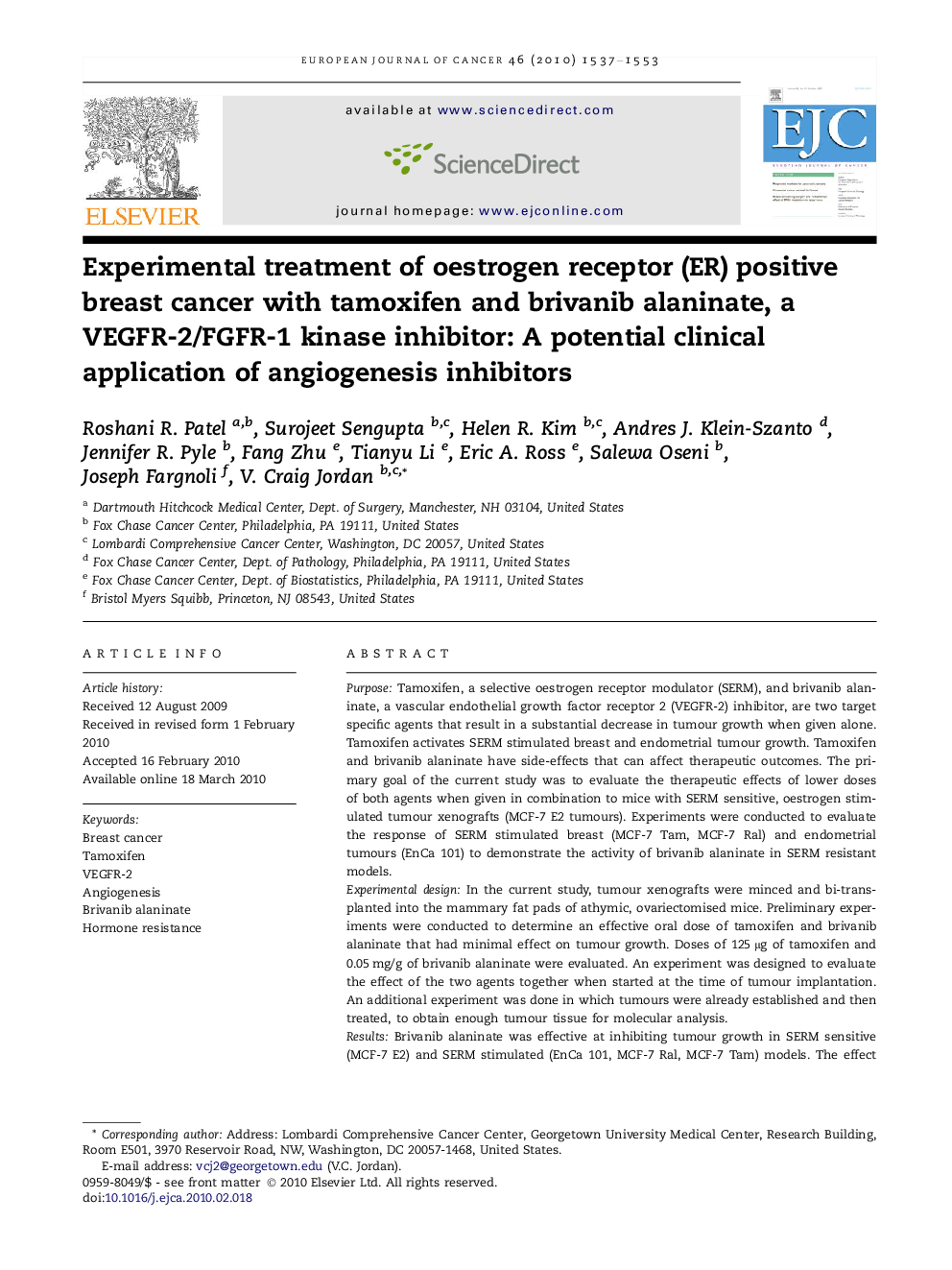| کد مقاله | کد نشریه | سال انتشار | مقاله انگلیسی | نسخه تمام متن |
|---|---|---|---|---|
| 2123395 | 1547211 | 2010 | 17 صفحه PDF | دانلود رایگان |

PurposeTamoxifen, a selective oestrogen receptor modulator (SERM), and brivanib alaninate, a vascular endothelial growth factor receptor 2 (VEGFR-2) inhibitor, are two target specific agents that result in a substantial decrease in tumour growth when given alone. Tamoxifen activates SERM stimulated breast and endometrial tumour growth. Tamoxifen and brivanib alaninate have side-effects that can affect therapeutic outcomes. The primary goal of the current study was to evaluate the therapeutic effects of lower doses of both agents when given in combination to mice with SERM sensitive, oestrogen stimulated tumour xenografts (MCF-7 E2 tumours). Experiments were conducted to evaluate the response of SERM stimulated breast (MCF-7 Tam, MCF-7 Ral) and endometrial tumours (EnCa 101) to demonstrate the activity of brivanib alaninate in SERM resistant models.Experimental designIn the current study, tumour xenografts were minced and bi-transplanted into the mammary fat pads of athymic, ovariectomised mice. Preliminary experiments were conducted to determine an effective oral dose of tamoxifen and brivanib alaninate that had minimal effect on tumour growth. Doses of 125 μg of tamoxifen and 0.05 mg/g of brivanib alaninate were evaluated. An experiment was designed to evaluate the effect of the two agents together when started at the time of tumour implantation. An additional experiment was done in which tumours were already established and then treated, to obtain enough tumour tissue for molecular analysis.ResultsBrivanib alaninate was effective at inhibiting tumour growth in SERM sensitive (MCF-7 E2) and SERM stimulated (EnCa 101, MCF-7 Ral, MCF-7 Tam) models. The effect of the low dose drug combination as an anti-tumour strategy for SERM sensitive (MCF-7 E2) in early treatment was as effective as higher doses of either drug used alone. In established tumours, the combination is successful at decreasing tumour growth, while neither agent alone is effective. Molecular analysis revealed a decreased phosphorylation of VEGFR-2 in tumours that were treated with brivanib alaninate and an increase in VEGFA transcription to compensate for the blockade of VEGFR-2 by increasing the transcription of VEGFA. Tamoxifen increases the phosphorylation of VEGFR-2 and this effect is abrogated by brivanib alaninate. There was also increased necrosis in tumours treated with brivanib alaninate.ConclusionHistorically, tamoxifen has a role in blocking angiogenesis as well as the blockade of the ER. Tamoxifen and a low dose of an angiogenesis inhibitor, brivanib alaninate, can potentially be combined not only to maximise therapeutic efficacy but also to retard SERM resistant tumour growth.
Journal: European Journal of Cancer - Volume 46, Issue 9, June 2010, Pages 1537–1553